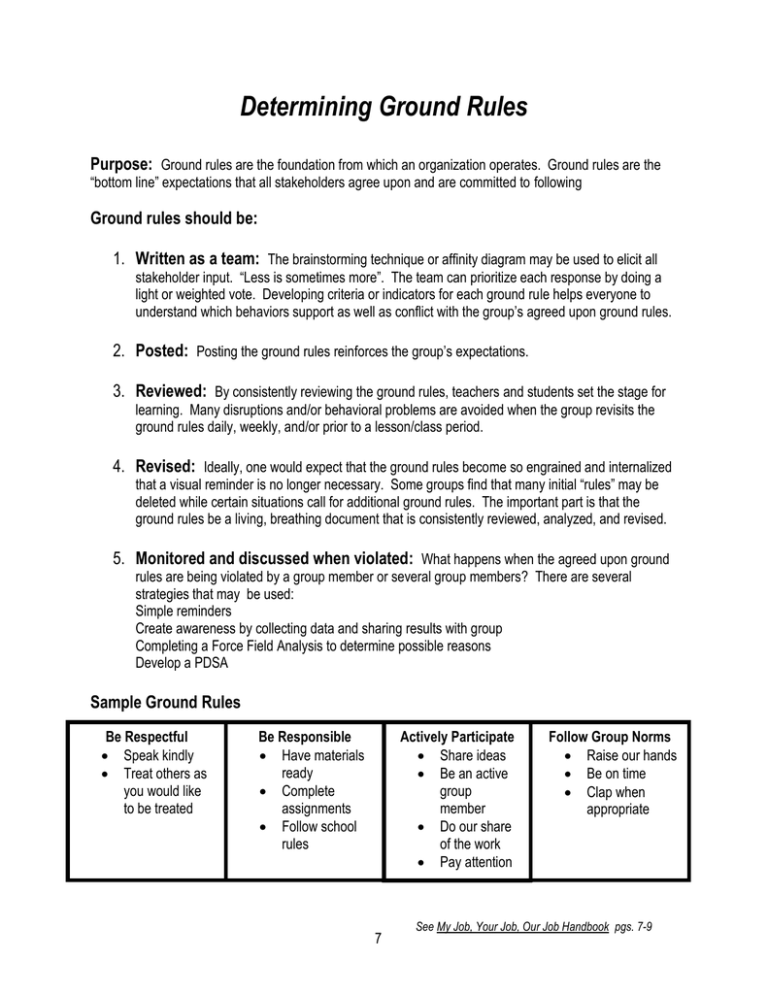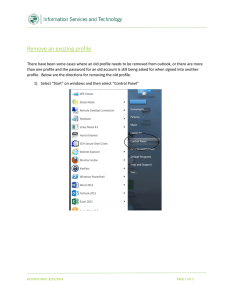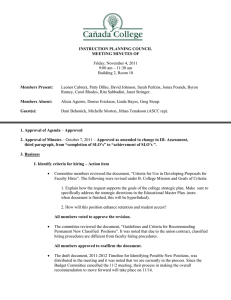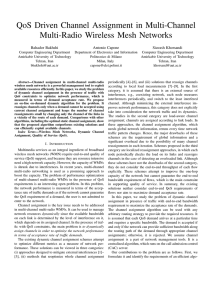How to Use Ground Rules
advertisement

Determining Ground Rules Purpose: Ground rules are the foundation from which an organization operates. Ground rules are the “bottom line” expectations that all stakeholders agree upon and are committed to following Ground rules should be: 1. Written as a team: The brainstorming technique or affinity diagram may be used to elicit all stakeholder input. “Less is sometimes more”. The team can prioritize each response by doing a light or weighted vote. Developing criteria or indicators for each ground rule helps everyone to understand which behaviors support as well as conflict with the group’s agreed upon ground rules. 2. Posted: Posting the ground rules reinforces the group’s expectations. 3. Reviewed: By consistently reviewing the ground rules, teachers and students set the stage for learning. Many disruptions and/or behavioral problems are avoided when the group revisits the ground rules daily, weekly, and/or prior to a lesson/class period. 4. Revised: Ideally, one would expect that the ground rules become so engrained and internalized that a visual reminder is no longer necessary. Some groups find that many initial “rules” may be deleted while certain situations call for additional ground rules. The important part is that the ground rules be a living, breathing document that is consistently reviewed, analyzed, and revised. 5. Monitored and discussed when violated: What happens when the agreed upon ground rules are being violated by a group member or several group members? There are several strategies that may be used: Simple reminders Create awareness by collecting data and sharing results with group Completing a Force Field Analysis to determine possible reasons Develop a PDSA Sample Ground Rules Be Respectful Speak kindly Treat others as you would like to be treated Be Responsible Have materials ready Complete assignments Follow school rules Actively Participate Share ideas Be an active group member Do our share of the work Pay attention 7 Follow Group Norms Raise our hands Be on time Clap when appropriate See My Job, Your Job, Our Job Handbook pgs. 7-9


